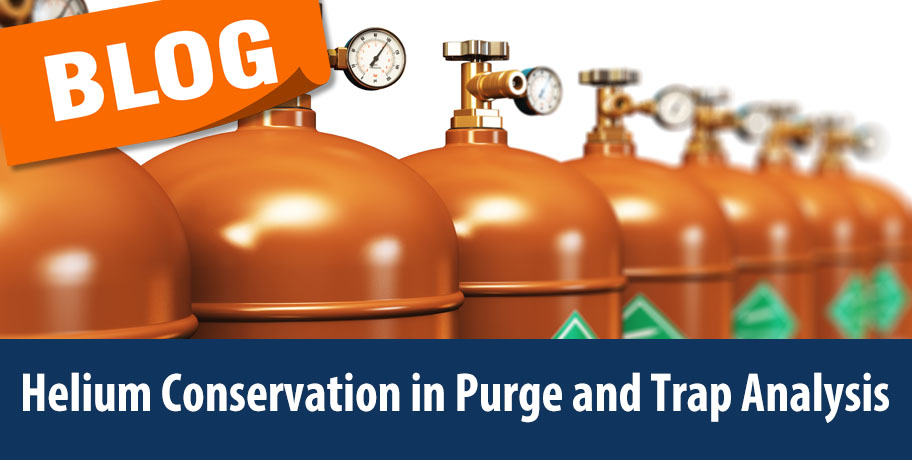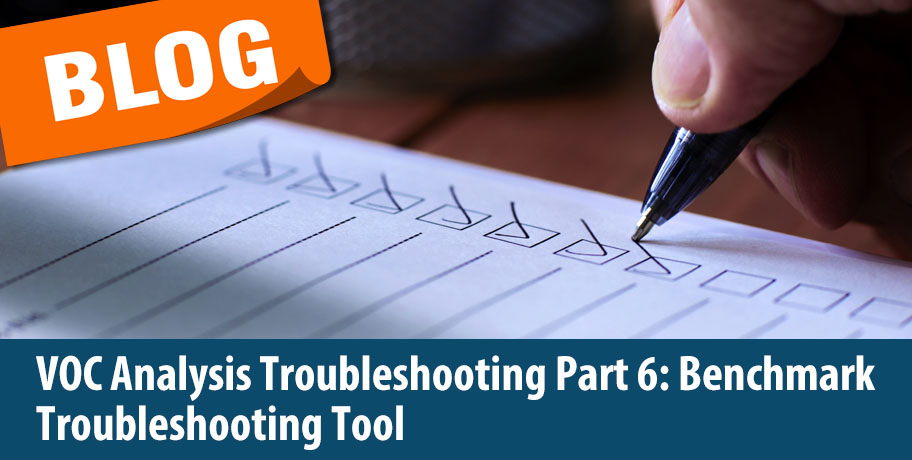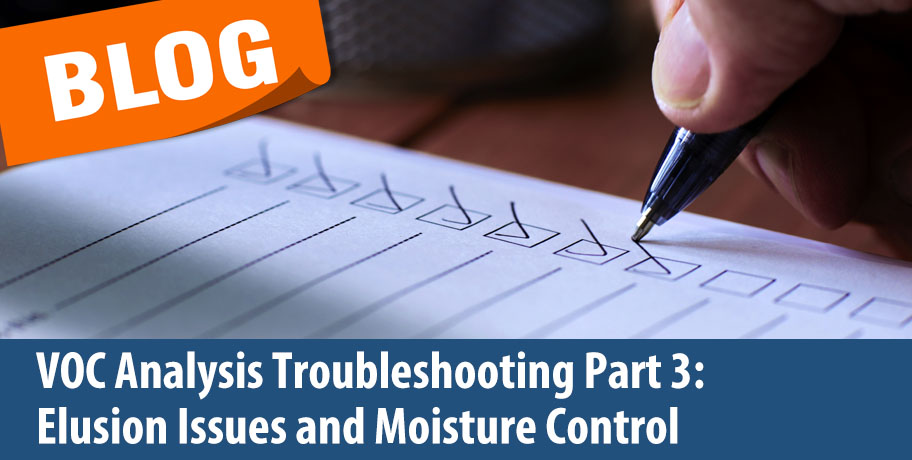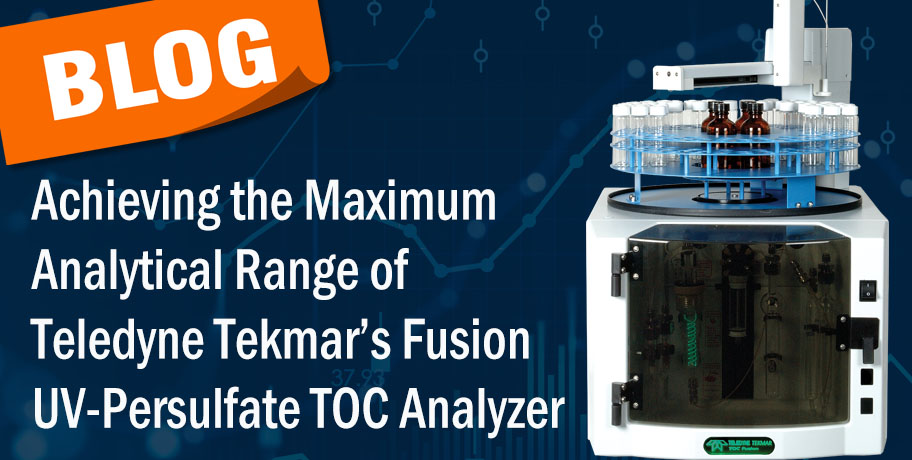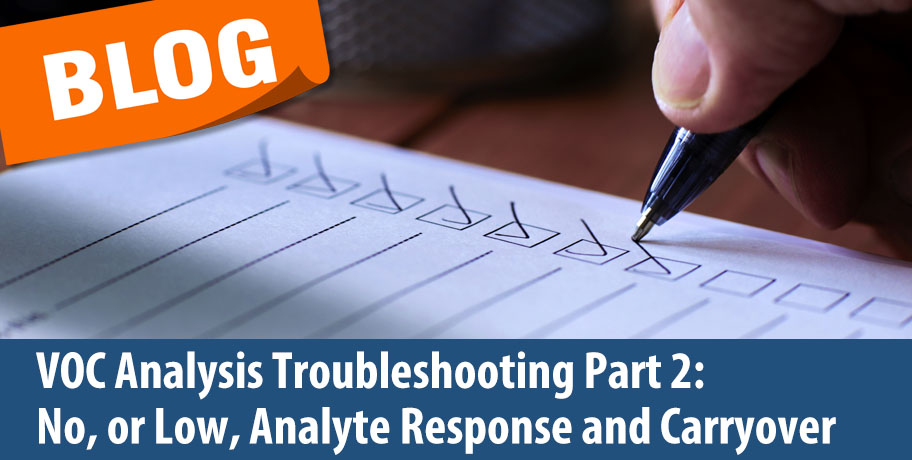With the holiday season upon us, your laboratory might be slowing or shutting down as you take time off from work. If you or your colleagues are away from your instruments for more than a long weekend, there are steps you can take to ensure a smooth startup when you get back into the laboratory.
Preparing Your Instruments for the Holiday Break
Posted by Amy Nutter on Fri, Dec 08, 2023 @ 02:05 PM
Tags: Purge and Trap Concentrator, GC/MS, P&T
Has your laboratory been having issues obtaining helium for your environmental analysis? As helium supplies become scarcer and more expensive, you may have been seeking alternative carrier gases or ways to conserve helium without sacrificing system performance. This blog will explore ways to conserve helium during your purge and trap (P&T) analysis.
Tags: helium, VOC, Teledyne Tekmar, P&T, Purge and Trap
Troubleshooting Part 6: Benchmark Troubleshooting Tool
Posted by Amy Nutter on Fri, Oct 20, 2023 @ 01:18 PM
In this last installment of our volatile organic compound (VOC) analysis troubleshooting series, the benchmark test will be covered. This benchmark test is available in the Teledyne Tekmar TekLink software tools menu. The tool allows for full electromechanical testing, including valving, heaters, vial handling systems, liquid delivery system, inputs and outputs.
Tags: VOC, Teledyne Tekmar, Volatile Organic Compounds, Purge and Trap
Troubleshooting Part 5: Six warning signs of a leak in your Purge & Trap and ways to detect the source
Posted by Amy Nutter on Wed, Sep 06, 2023 @ 04:07 PM
Throughout this troubleshooting series, in nearly every topic discussed, the answer led to performing a leak check on the Purge and Trap (P&T). This part of the series will go over the preventative maintenance program and understanding the leak check troubleshooting tool in Teklink, the Teledyne Tekmar P&T software.
Tags: VOC, P&T, Purge and Trap, Atomx XYZ
Troubleshooting Part 4: Linearity and reproducibility issues
Posted by Amy Nutter on Fri, Aug 11, 2023 @ 11:12 AM
This is the forth in our Troubleshooting series for VOC Analysis.
- Part one is linked here, VOC Analysis Troubleshooting Part 1: How to Begin Troubleshooting
- Part two is linked here, Troubleshooting Part 2: No or low analyte response and carryover
- Part three is linked here: Elusion Issues and Moisture Control
Troubleshooting linearity and reproducibility issues in your systems can be difficult. Problems with linearity and reproducibility can make calibrating your systems frustrating, and if internal standards are varying, it can cause all other target compound to look unstable.
Tags: VOC, P&T, Purge and Trap
Troubleshooting Part 3: Elution issues and moisture control
Posted by Amy Nutter on Fri, Jul 28, 2023 @ 01:33 PM
This is the third in our Troubleshooting series for VOC Analysis.
- Part one is linked here, VOC Analysis Troubleshooting Part 1: How to Begin Troubleshooting
- Part two is linked here, Troubleshooting Part 2: No or low analyte response and carryover
Part three will discuss elusion issues and moisture control for VOC analysis.
Tags: VOC, Teledyne Tekmar, Volatile Organic Compounds, P&T, Purge and Trap, Moisture Control
Understanding the Importance of Cleaning and Blanking Procedures for the Fusion UV/Persulfate TOC Analyzer
Posted by Stephen Proffitt on Fri, Jun 30, 2023 @ 04:03 PM
A typical analysis schedule for the Fusion TOC analyzer starts with a cleaning procedure. The cleaning procedure confirms cleanliness of the system and will ensure low instrument background. Also, tracking cleaning procedure results from day to day will give an indication if any contamination issues may be occurring. It is imperative to have low background and no contamination to achieve superior low-level TOC results.
Achieving the Maximum Analytical Range of Teledyne Tekmar’s Fusion UV-Persulfate TOC Analyzer
Posted by Stephen Proffitt on Tue, Jun 27, 2023 @ 03:34 PM
The Fusion Total Organic Carbon (TOC) analyzer is equipped with TOC Teklink, a fully optimized graphical user interface.
This blog will demonstrate how Teklink helps to achieve the maximum analytical range for analysis.
To allow for quick startup, predetermined methodology has been set up for various sample types. For example, there are preset methods for analyzing pharmaceutical water, drinking water, and wastewater.
Troubleshooting Part 2: No or low analyte response and carryover
Posted by Amy Nutter on Fri, Jun 09, 2023 @ 03:34 PM
This is the second in our Troubleshooting series for VOC Analysis.
Part one is linked here, VOC Analysis Troubleshooting Part 1: How to Begin Troubleshooting
Part 2 will discuss No, or Low, Analyte Response and Carryover.
Troubleshooting your instruments can be a frustrating process, but I hope this series eases some of that pain and helps you through it. If you’re dealing with no or low response from your analytes, you first need to know if the analytes are even getting to the Gas Chromatograph and Mass Spectrometer (GC-MS). Following the advice in part one of this series, start with a direct injection into the GC of the same standards you use on your Purge and Trap (P&T), to confirm normal operation of the GC-MS. If you see poor chromatography and resolution or reduced response, you should change your inlet liner and clip the column.
Tags: VOC, Purge and Trap
VOC Analysis Troubleshooting Part 1: How to Begin Troubleshooting
Posted by Amy Nutter on Fri, Jun 02, 2023 @ 10:21 AM
A carefully designed and faithfully executed preventative maintenance program is the best method for maintaining your scientific instruments. Keeping up with daily, weekly, monthly, and even quarterly maintenance tasks will help maintain the performance of the unit and decrease downtime. Maintenance checklists can be found in the manual to your Teledyne Tekmar instrument. The manual can also be an immense help with troubleshooting, because it has tips and instrument flow diagrams.
Tags: VOC

